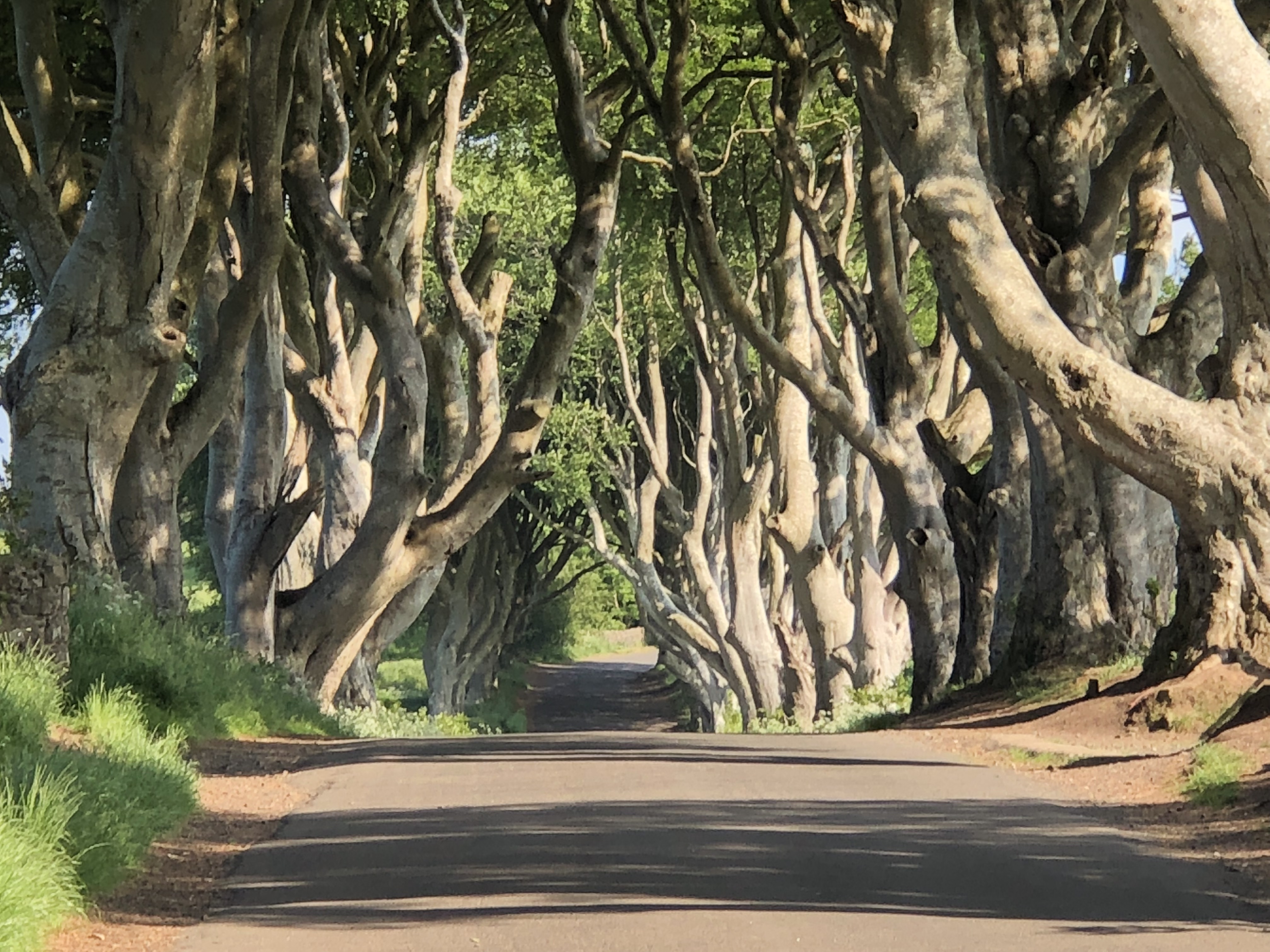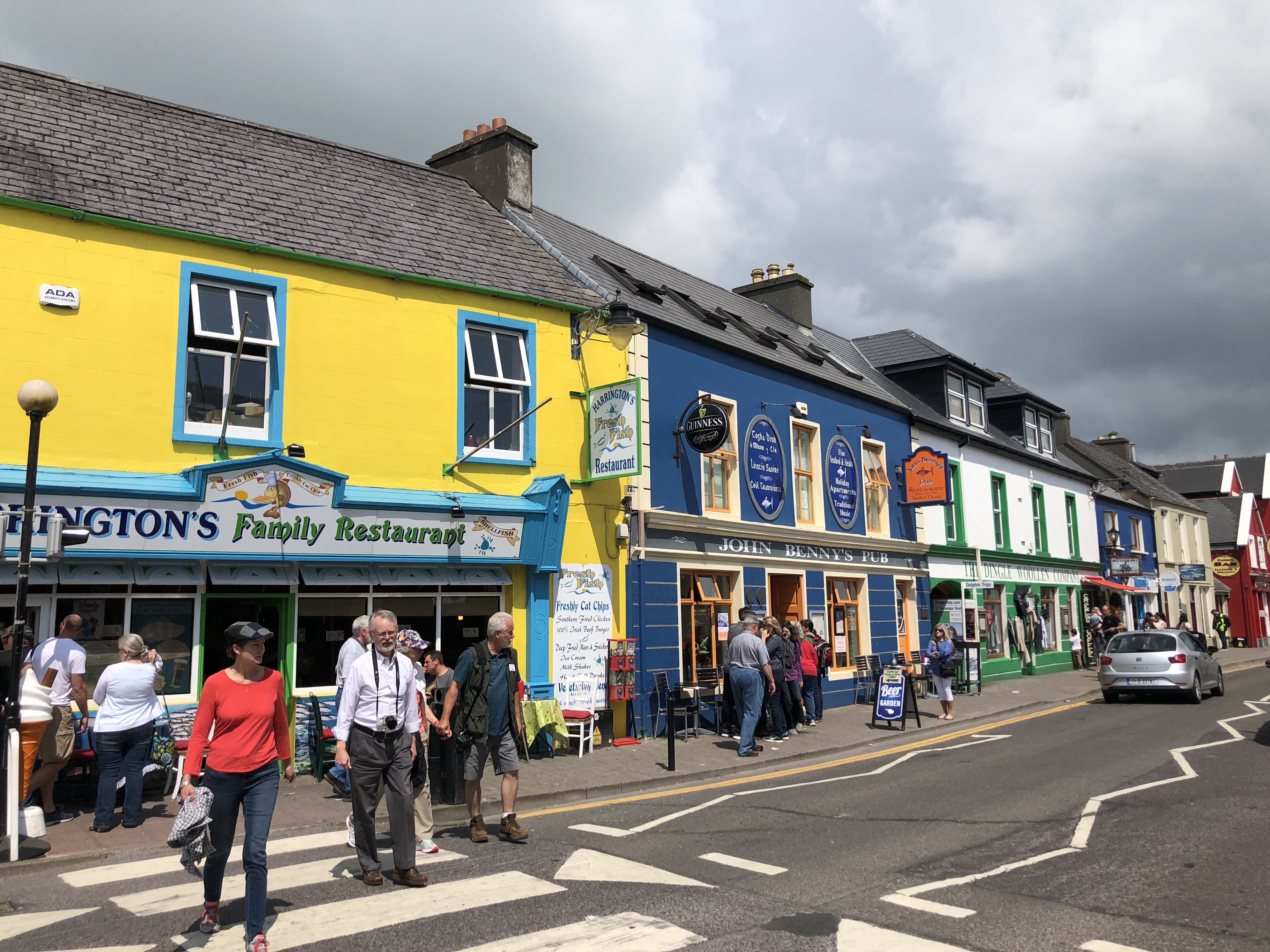
As an admitted travel snob, for years I put off seeing the Emerald Isle because it all seemed too mainstream and touristy. After all, which sounds cooler: “I went whitewater rafting in the jungles of Borneo” or “I drove around on the left side of the road in Ireland”? But as I’ve mentioned at least once before, there’s a reason why touristy places are considered touristy – they’re really worth seeing. That epiphany really proved true on a recent trip to Ireland, and in the process of asserting my independence from the busloads of tourists via a road trip through areas less-traveled, I also stumbled upon what I would consider to be good, if unorthodox advice for anyone seeking to do the same.
Tip #1 – To Prepare for your Road Trip, Prepare for the Roads

First off, I should say that the roads in Ireland were unequivocally in good shape, well-paved, and at times scenic to the extreme. What you need to prepare for, are their dimensions. To put it in perspective, first go into your living room, sit on the right side of your loveseat, and picture the steering wheel in front of you. Then look at the space three inches off each side of your loveseat. That’s pretty much the size of all secondary and tertiary roads in Ireland. At times they even had a “shoulder” demarcated by white lines, just in case you’re skinny enough not to occupy more than 1.5 inches of clearance.
To compound that effect, bear in mind that these roads allow for oncoming traffic. To compound things even further, the roads are quite often bordered with the quaintest, most idyllic-looking stone walls just dripping with tufts of grass and colorful wildflowers. If that seems like a lot of detail, just remember that you will have a good look at them when they’re whizzing by just inches outside your window. So prepare yourself mentally for tight quarters and close encounters, otherwise you might just want to take the insurance offered by your rental car agency.
Tip #2 – You Don’t Have to Stop At Every Castle

Coming from North America, just the idea of a castle conjures thoughts of romance and adventure, fairy-tales and lore. I can tell you that there’s no lack of castles in Ireland – in fact, it would be pretty difficult to avoid them even if you wanted to. But after seeing my fair share, I have some advice on how to keep from suffering castle overload – you don’t have to stop at every one.
Basically, you can break down the castles into three categories – ruins, tourist traps, and accommodations. Personally, I found the ruined castles most evocative. There’s no greater way to comprehend the amount of history involved more than witnessing the ravages of time. My particular favorite was Ballycarbery Castle across from the town of Cahersiveen along the Ring of Kerry. Smothered in ivy and fenced off from tourists in view of its obvious structural instability, it makes a great photography subject sitting perched on its grassy hill at the edge of the peninsula.
The tourist traps, such as Dunguaire Castle in County Galway for example, are generally in good shape and will give you an adequate – if touristy – idea of what life was like back in its heyday. For a tour of the inside, you’ll often have to pay anywhere from 8 Euro on up, so think long and hard if seeing a few stone-lined hallways is worth it to you.
The best option, in my opinion, is to actually stay in a restored castle, which gives you access to its often ornate interior, along with the subtle bragging rights of saying “I once slept in a castle”. Seeing as that I’m married to a beautiful princess, I had no choice but to stay at least one night in a castle. And while it definitely isn’t a budget-friendly choice, it certainly enhances the whole Ireland experience. Personally I chose to stay at Kilronan Castle in County Roscommon. Set up against a peaceful lake in the middle of a sprawling lawn, it was a relaxing highlight of my trip.
Just one more note: if ruined castles aren’t your thing, there are lots of crumbling monasteries and abbeys that dot the landscape. Two in particular that were worth a half hour’s exploration were Muckross Abbey in the middle of Killarney National Park, and Corcomroe Abbey tucked down a gravel road in County Galway.

Tip #3 Get Ready for Some Tongue-Twisters

Despite the fact that English is spoken everywhere, you’ll find many signs and towns that preserve their heritage by sticking to their Irish language roots – particularly on the Dingle Peninsula (let me preempt your inner 8 year old and say that no, I didn’t see any berries there). As a result you’ll find yourself navigating through towns you can’t even pronounce such as Lisdoonvarna, Annascaul, Ballinskelligs, Bealaclugga and lots of other names that won’t seem to make a lot of sense. Fortunately signage is good, so if you’re coming up to a roundabout (which are everywhere, by the way) and need to decide between Killorglin or Abbeyfeale, just do your best to choose the one that starts with the right letter and leave the pronunciation to the locals.
Tip #4 Find Yourself a Base of Operations

Having a general idea of what you want to see and how long you want to see it is essential for planning a road trip in Ireland. My recommendation is to base yourself in a given region and take day trips from there. For instance, in my opinion, the southwest of the country is the most scenic, with the most dramatic views on the aforementioned Dingle Peninsula, the tourist-heavy-but-so-very-worth-it Ring of Kerry (go counterclockwise to avoid getting stuck behind the tour buses) and the even better offshoot, the Skellig Ring, with the rugged coastline and islands as a backdrop. Staying in the charming town of Killarney or its surrounding hamlets would allow you to easily spend the day seeing the sights, and be back in town for a pint of Guinness before dark.
On the subject of accommodations, Ireland boasts a ton of quaint bed and breakfasts and rental homes. We stayed at a genuine thatched roof cottage in the miniscule hamlet of Cordal that was off the charts when it came to character and charm. Again, if you’re looking for the full-on Ireland experience, this is an option to consider.
Tip #5 Remember Which Ireland You Parked In

When driving through the bucolic landscape, it’s easy to forget that Ireland has had its share of political difficulties. While the entire island is beautiful, don’t forget that it is made up of two distinct political entities – the Republic of Ireland, with its capital in Dublin, and Northern Ireland, a part of the United Kingdom – not that it makes much of a difference to the driver. Honestly, I wasn’t exactly sure of when we both entered and left Northern Ireland, and other than the road measurements changing to miles instead of kilometers, and a bit more traffic congestion, it would’ve been really hard to tell. I suppose the Union Jacks flying everywhere would give it away, but other than that it’s the same landscape of rolling hills, impossibly picturesque meadows and (very) narrow country lanes as can be found in the Republic. Just keep in mind that one of the island of Ireland’s greatest natural attractions – the Giant’s Causeway – is located in Northern Ireland, U.K. I say this because if you intend on taking the bus back up to the top – which you should unless you’re a sadist – be sure to keep a few British Pounds on you, as Euros are only used further south.
Rules of the Road and Parting Advice
I would be derelict in my duties if I didn’t pass on some tips for driving other than preparing for claustrophobically small roads. Driving is on the left side of the road, which means the driver sits on the right side of the car and shifts with their left hand. I know that may sound daunting, but after about ten minutes it starts to make sense. Just be mindful in traffic or under pressure (especially when making turns) that you’re on the correct side of the road.
When traffic approaches one of those tiny lanes I mentioned, it is proper etiquette to pull aside if you have space to do so – meaning more than the 1.5 inch shoulder I referred to before. Whether you’re the one doing the passing or pulling aside, it’s good form to give a friendly wave to the other person. In fact I found the Irish to be very friendly and remarkably polite, so even when driving try to keep your cool – they probably will. And if someone cuts you off, you’re more than likely to get the aforementioned wave, and not ‘the finger’.
For me, Ireland was far more beautiful than I had hoped for or imagined. Almost every landscape was right out of storybook, and the only way I can describe it is bucolic, which is an adjective meaning: relating to the pleasant aspects of the countryside and country life. A road trip through Ireland really is more about the journey than the destination, so be sure to schedule some time to gaze out at the cliffs, wander through the woods and just take in the idyllic nature of the setting. But before you do, make sure you pull to the side, and if someone is coming, be sure to wave.
Have you been to Ireland? Share your own tips by commenting below.








Share Your Love For All Things Travel With A Gift From Custom Travel Art by Ben!
Whether it’s a custom tee, bucket list design or personalized departure or arrivals board, Custom Travel Art can create the perfect gift for the traveler in your life – even if that traveler is you! Browse our collection now for the perfect travel gift.

Great advice on how to enjoy Ireland properly. I feel more mentally prepared for the UK, thanks! Thanks!
LikeLike